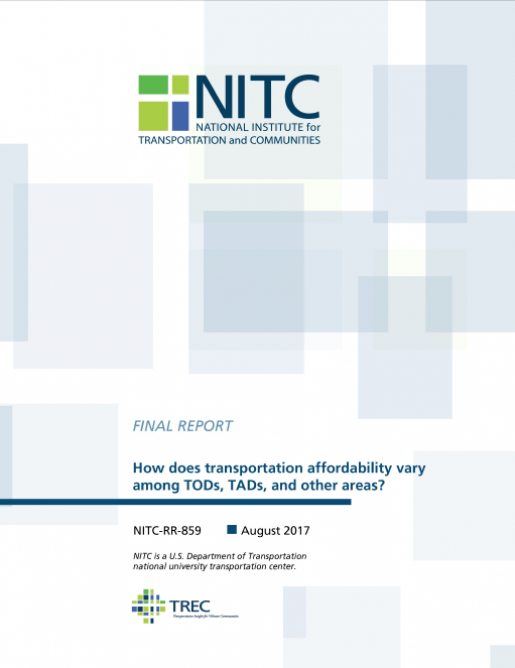How does transportation affordability vary between TODs, TADs, and other areas
Expenditures on transportation have increased from the sixth largest share (less than 2%) of household budgets in 1917 to the second largest share (over 20%) since the 1970s. Under this circumstance, transit-oriented development (TOD) has gained popularity worldwide as a sustainable form of urbanism by concentrating developments near a transit station so as to minimize auto-dependency and maximize ridership. A TOD project should give people more transportation options and decrease their transportation cost. However, household expenditure on transportation – in other words, transportation affordability – has been under-studied, especially in the context of TOD. As a result, transit officials don’t have empirical evidence of transportation affordability in different urban contexts. Thus, this study examines differences in transportation affordability between TODs, transit-adjacent development (TADs), and other areas.
For this purpose, this project defines TODs as any area of medium to high density and mixed-use within ½ mile buffer of a transit station and TAD as any area of low density and single use within same catchment area. This research is conducted in three phases. First, we classify TODs, TADs, and other areas through literature review and then filter data from a TOD Database of 4,416 existing stations. Second, using a ½ mile catchment radius, we will analyze disaggregate (household) travel and vehicle ownership data to estimate differences in automobile and transit use between different area types. We use multi-level modeling (MLM) because our data structure is multi-level with households nested within transit lines which in turn, are nested within regions. Finally, we compute the transportation cost and transportation affordability – the proportion of the cost divided by household income – of residents living in TOD areas. The formula for calculating transportation cost is the same used in the work of the Center for Neighborhood Technology (CNT) with their Location Affordability Index (LAI), which consists of auto ownership, auto use, and transit use cost. Then we estimate how overall levels of transportation affordability in TODs are different between TODs, TADs, and other areas when controlling other factors like built environment and socio-demographic characteristics. Transportation affordability is an important issue for livable communities since not only transportation cost accounts for major share of household expenditure, but also it has been increasing during the last decade. By researching how, or if, a TOD improves transportation affordability, we would have a criteria to invest in a TOD project that gives greater economic benefits to individual households and helps create more affordable living in a city.
